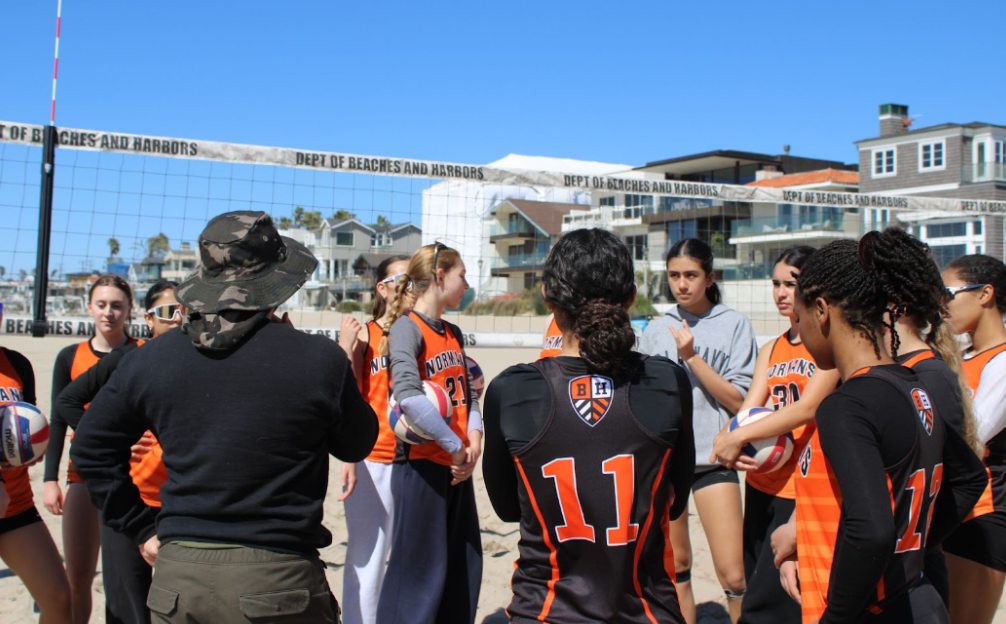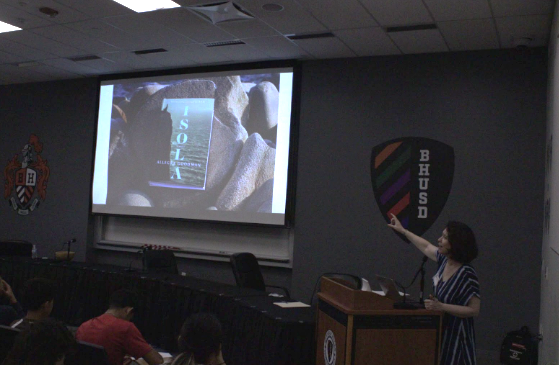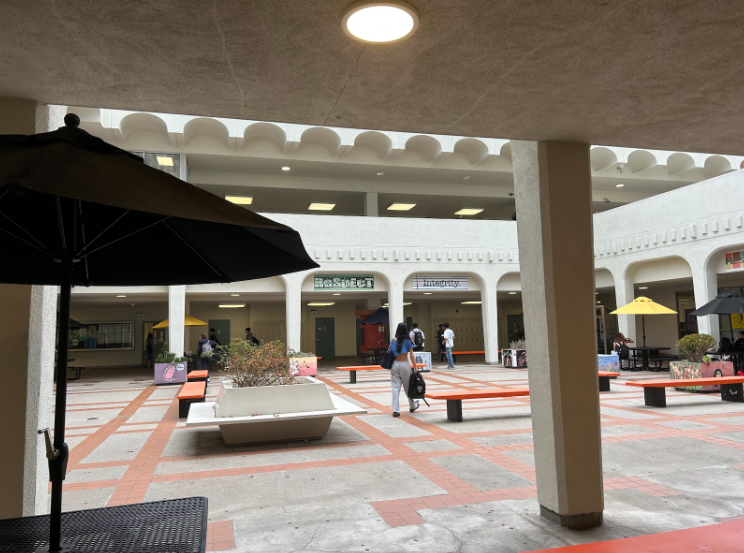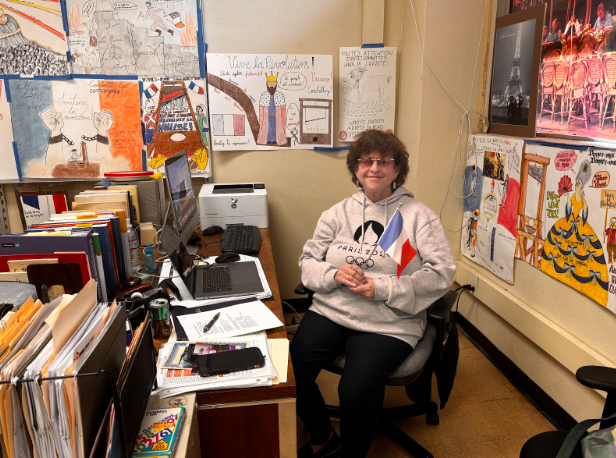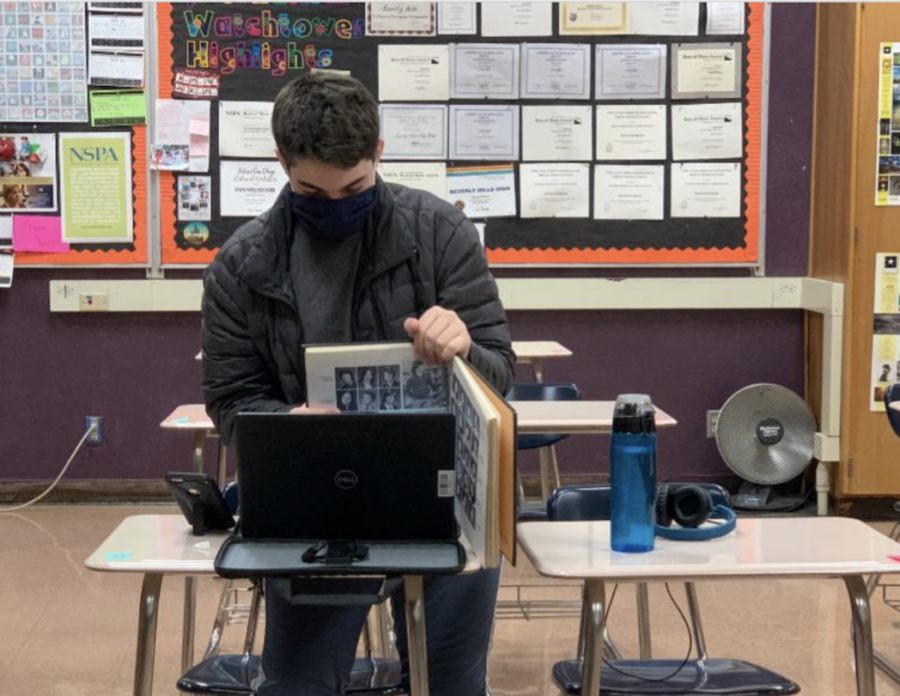Emma Newman staff writer
There were two reactions that I felt when I heard that school was returning without cohorts. One was the intense feeling of happiness at the prospect of reuniting with my friends, meeting some of my teachers face-to-face for the first time and truly engaging with my schoolwork. The other was panic–at the idea of class getting harder, at the sudden adjustment that this could entail and at the feeling of leaving my safe, stress-free home behind.
However, it was impossible to fully comprehend what returning to school would mean until I had actually experienced it. Returning, even for the two days that I experienced it, had advantages and disadvantages. Below are some of the pros and cons of returning to school, from someone who has actually done it.
Pros
The most rewarding aspect of returning to school was the improved social connections that I made. Seeing people that I knew in person, no matter how few, was a positive experience impossible to replicate via Zoom. This interaction didn’t just improve my lunches – it enhanced my classroom experience. Instead of the dreaded lull of breakout room silence, I could work with students to better understand school material.
Another unique benefit of returning to school was a break from perpetual boredom and disengagement. Hearing and seeing my teacher talk via Zoom is, in theory, similar to being in-person, but it is in fact exponentially less interesting than being in-person during long lectures. The simple act of being in-person focuses attention and improves my learning experience.
Perhaps the most important positive side effect of being in-person, though, is an improvement in my spirits. Attending class virtually often drags on for so long that counting down the seconds until the class ends can seem like a more efficient use of time than paying attention. Instead of walking around and talking during breaks, I often look at my computer, scroll through Instagram, or simply wait until the break is over.
This level of toxic negativity that invades my life at home daily did not apply to in-person classes. Simply walking from class to class improved my mood substantially because of its energizing effects. Even reintroducing myself to my teachers and classmates seemed like a fun activity in comparison to the isolation that I often felt at a Zoom screen.
Overall, while sleeping an extra few minutes was an appealing at-home prospect, attending school in-person brought an energizing and mood-lifting quality that sleep alone did not.
Cons
As fun as it was to see my friends, teachers and campus again, though, doing so didn’t actually improve my quality of education. Because most of my fellow students attend virtually, teachers often direct their attention toward virtual students instead of those in-person. This produced an unfortunate truth – I still had to stare at a screen to get instruction when I attended in-person classes.
Many of my teachers also did not address the class by sitting in the direction that students are facing, meaning that when I tried to gain instructions directly from my teacher, I had to tilt my head. This reduces the quality of notes that can be taken, which leaves many students to resort to reliance on their Zoom teacher instead of their real one.
What’s more is that students who attend class virtually are actually acknowledged by some teachers to a greater extent than in-person students. This is because most in-person students, including myself, kept their cameras off during class in an attempt to be more present in the classroom. Because some teachers spend more time looking at their screens than their real-life students, virtual students are called on for more questions and made eye-contact with more frequently. There were multiple times that I raised my hand in the middle of class and not only was not called on, but was not even looked at.
Engaging in extracurricular activities was also significantly more difficult when attending in person. Club meetings are not held in classrooms but held virtually. The result of this fact is that students who come to school either have to attend meetings outside with their headphones on, which limits in-person interaction, or skip the meeting altogether. Because of this, I only attended school on days when club meetings were not taking place.
More than any of the educational aspects, though, I noticed very serious health dangers of returning. Certain precautions that I personally deem necessary for a safe environment are not being enforced.
For example, students, instead of sitting in small groups, were allowed to eat lunch with large groups of friends, similar to how it was pre-pandemic. Teacher also took their masks off during class. Out of the six classes I took, two of my teachers took their masks off to eat in the two days that I attended in-person. For unvaccinated students, these actions could be a cause of sickness, which could make the school a perfect breeding ground for a super-spread. I had one vaccine when I attended, but because I was not fully protected, I still felt nervous.
Ultimately, it is up to the students and their parents to decide whether or not the negatives outweigh the positives of going to school. For me, they did. However, because of these many considerations, administrators and teachers should not pressure students into returning. Instead, they should be understanding of both sides and encourage students to do whatever is best for themselves and their families.









